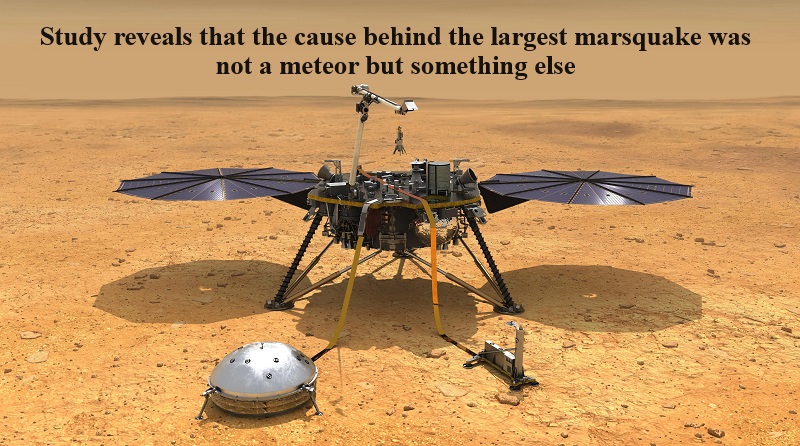
A recent study has unveiled that the largest marsquake, which occurred on May 4, 2022, was not triggered by a meteor but rather by tectonic forces within Mars.
A paper published in the Geophysical Research Letters journal explains that two significant quakes on Mars were not the result of meteor impacts or any celestial object. Instead, the most probable explanation is the sudden release of tectonic forces within the planet.
The marsquake, labeled S1222a, had a magnitude of 4.7 and caused tremors that resonated throughout the planet for a duration of six hours.
Dr. Benjamin Fernando, the lead author of the study, reached out to space agencies from various countries to investigate the marsquake. However, despite surveying 144.8 million square kilometers of Mars, Fernando’s team could not locate any craters, leading them to conclude that an asteroid did not cause the quake. He noted, “The most exciting thing about this research has been bringing together researchers from across the world to search for the crater, including those from nations who do not routinely collaborate in space research.”
The InSight research team determined that Mars is more geologically active than previously thought based on their earlier measurements.
Nonetheless, Dr. Fernando believes that Mars still lacks active tectonic plates, and the tremors were the result of stress release within Mars’ crust. He stated, “These stresses are the result of billions of years of evolution, including the cooling and shrinking of different parts of the planet at different rates.”
“We still do not fully understand why some parts of the planet seem to have higher stresses than others, but these results help us to investigate further. One day, this information may help us to understand where it would be safe for humans to live on Mars and where you might want to avoid it!” he added.
Dr. Daniela Tirsch, the science coordinator for the high-resolution stereo camera on the ESA’s Mars Express spacecraft, emphasized, “This experiment shows how important it is to maintain a diverse set of instruments at Mars, and we are glad to have played our part in completing the multi-instrumental and international approach of this study.”
Other international collaborators have expressed similar sentiments.
Dr. Jianjun Liu from the National Astronomical Observatories, Chinese Academy of Sciences, stated, “We are willing to collaborate with scientists around the world to share and apply this scientific data to get more knowledge about Mars and are proud to have provided data from the color images on Tianwen-1 to contribute to this effort.”

Post Your Comments